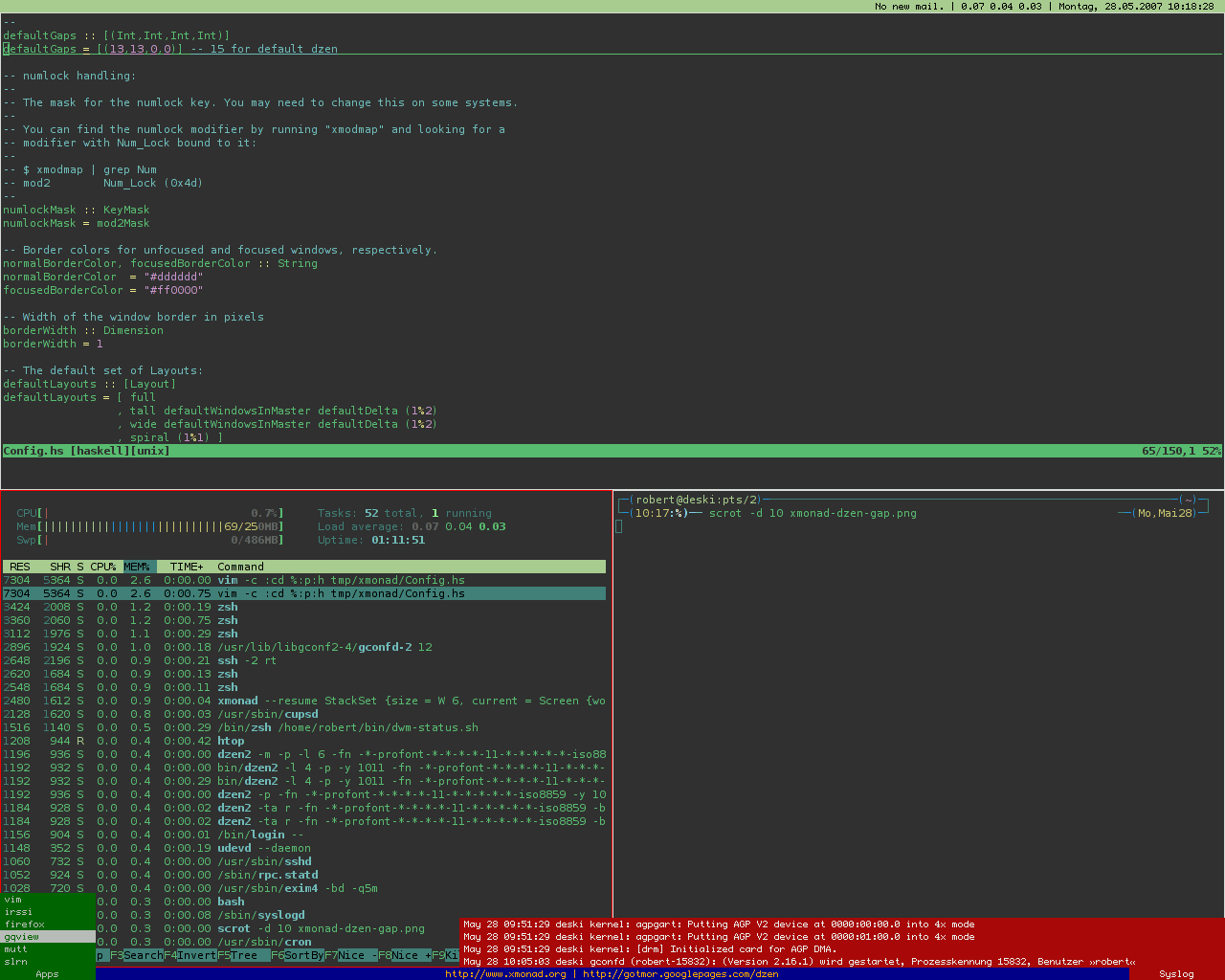
- Linux mouseless window manager full#
- Linux mouseless window manager code#
- Linux mouseless window manager professional#
- Linux mouseless window manager mac#
And this is a productivity machine after all. Which means things tend to work out of the box.
Linux mouseless window manager mac#
Not because of Linux, I hasten to emphasize, but because Windows and (occasionally) Mac are the only operating systems that most peripheral vendors care about these days. Although you can usually do all of those things on Linux, it usually involves more effort than I'm willing to invest these days.
Linux mouseless window manager professional#
If it was my choice, I would never touch Windows because it's just not as developer friendly, and I'm a professional developer.īut sometimes you want to run Office. I am sticking with it for now.Yes those GUI windows are all Linux apps. Overall, I have found xmonad a big aid to focus and getting work done efficiently. Finally there are a small number of applications that are horrible to use under xmonad. Making xmonad play nicely with a projector or a second monitor seems confusing, but I have not had enough time to explore it and there does seem to be some talk of it working rather well. It turns out that it can be done, using the right mouse button and dragging the right hand side of the window.
So, what have been the downsides? It took me some time to get my head around resizing windows when I really had to. I’ve made a brief case for the advantages of xmonad. I should also mention that doing everything with the keyboard makes you look cool. Combined with vim as a text-editor and vimperator in my browser, I find that nowadays I use the mouse less and less. The simple red border that xmonad adds to the active window helps you get to the right place quickly and without fuss. Switching windows is easier with vimmish keybindings than it is with alt-tabs.

Now, that has little to do with staying focussed on what you're doing, but it does help you do more of it with less effort and possibly less RSI. If I need to change task, then all my windows are already on another workspace.įinally, there is the advantage of not using the mouse as much. I can see all the relevant ones for the current task. Xmonad gives me permission not to worry about the size or ordering of my windows. How might that have an influence on anything? Well, I found with my previous window manager that there was a cognitive load in flicking between windows, resizing them and other expensive context switches. You can resize them if you really have to, but most of the time you don’t. Xmonad, as a tiling window manager, lays out your windows for you. But I can relax and not think about them while I need to focus on the task at hand. I trust my other workspaces to be there if I need them. No emails, no browser, just the things I need and nothing else.
Linux mouseless window manager code#
My code window is just gvim and a terminal or two.
Linux mouseless window manager full#
Its like the various full screen distraction free editors but applied to whatever application you’re running. For an easily distracted person like me, this is an aid to focus.

When I am in a workspace, there is nothing unrelated to the task I am working on. There simply isn’t enough room in a single workspace to show large number of tiled windows. I had never really taken full advantage of this stuff in Gnome, but xmonad makes it almost necessary to work this way, especially if you want more than 4 or 5 windows open at once. If I need to drop someone an email about some code I am writing, I can flip straight into my email workspace, without distracting myself trying to figure out if my email is open and where I put it. The difference between this approach and alt-tabbing a bunch of times until I get to the right place is considerable. Switching is easy (alt-1,alt-2,etc) but makes me conscious of my context switch. I always have a browser open in workspace 1, code in workspace 2, email in 3 and so on. The workspaces have been one of the biggest wins for me. When I first set xmonad up, I configured its various workspaces. Nevertheless, I found that some of the constraints of the environment helped me. It is true also that I may have seen the same benefit by using another tiling window manager or even by using Gnome more effectively. So, full disclosure - I have rather enjoyed using xmonad. I want to talk briefly about how I have found myself more productive since making the leap from Gnome in this quick addendum to the previous article.Ĭlaiming that something makes one more productive is a bold and often rather nebulous statement that tech writers often make for a product they have enjoyed using. I wrote about my initial experiences with the Haskell tiling window manager a while back. I have been using Xmonad as my main window manager for several months now.


 0 kommentar(er)
0 kommentar(er)
